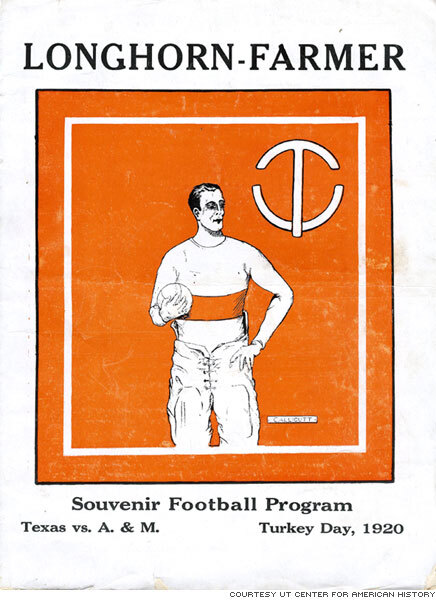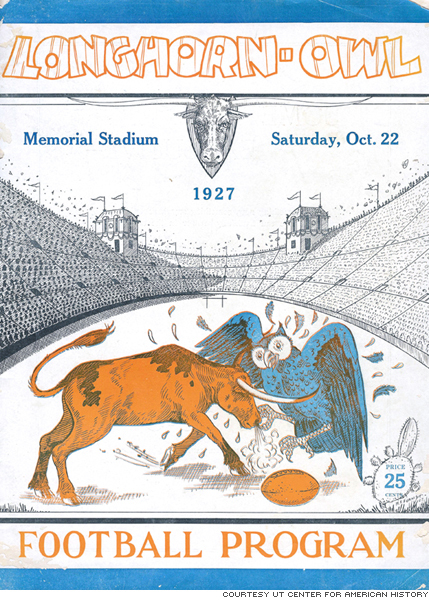1920-1929
Although the 1920s are remembered as the time of Prohibition, flappers, Lindbergh, Hemingway, and jazz, they must also be remembered as the Golden Age of Sport. Celebrity athletes such as Babe Ruth, Bill Tilden, Gertrude Ederle and Jack Dempsey became household names in the Twenties and inspired a new generation of men and women to look to sports for entertainment, relaxation, fitness, and perhaps even a career. Everywhere across America in the post-war years, gymnasiums and stadiums were being constructed, and playgrounds were installed in city parks. College football became important. Better roads and cheaper automobiles made it possible for fans to travel to games more easily, and many universities, including Texas, began building campaigns to seat the increasing numbers of fans who wanted to be part of the college football experience.
The Twenties were certainly a golden age of sport for Texas. When Berry M. Whitaker, the acting intramurals director, was told by Athletic Director L. Theo Bellmont that he wanted him to replace Juneau, Whitaker didn't know if he wanted the job or not. However, he went 9-0 in his first year and won the SWC Conference Championships. For the rest of the decade, the Longhorns continued to play great football, first under the direction of Whitaker, who resigned in 1922 to go back to intramurals because he was developing ulcers; and then under the leadership of E.J. Stewart (1923-1926), who led the Longhorns to a 24-9-3 record; and finally by Clyde Littlefield (1927-1933), who would win two SWC championships during his years as head football coach.
However, the highlight of the decade was unquestionably the building of Texas Memorial Stadium, completed and dedicated at the A&M game in 1924. Like many stadiums built following the end of World War I, Texas’ stadium was built as a permanent monument to the University alumni who lost their lives in the “war to end all wars.” Neo-classical in design, the horseshoe shaped stadium became a common element on the football programs of the Twenties. It was a big stadium that created big expectations for the Texas program.
One interesting aspect of the 1920s program covers is that they also reveal a greater emphasis on the team mascot as emblematic of the team itself. Up through approximately 1927, for instance, most of the covers examined for this project that contained an image (other than simply a decorative scroll or building) contained pictures of human beings. Consider the 1920 Texas vs. A&M cover, for example. Although Callicutt, the artist, has drawn an unusual, curved UT logo, the player is presented as realistically as possible against an orange background. Although the backgrounds are more elaborate, the covers of the 1926 Texas vs. SMU program and 1926 Texas vs. A&M program also feature humans, although both are executed with considerably more skill than Calicutt managed in 1920.
The program for the Texas vs. Rice game of 1927, however, shows a realistic Longhorn battling a bookish Owl—and it is one of the earliest times that the image of a Longhorn appeared on a UT program cover. The idea of the fighting mascots would dominate later program designs, especially in the 1950s and 1960s. The 1927 cover is also the first known cover to contain imagery associated with the American southwest—note the cactus plant found in the bottom right-hand corner. Lastly, another interesting thing about the late Twenties covers is the emergence of a price printed on the cover. After going from 35¢ in 1926 to 50¢ for the A & M game in 1926, the 1927 programs were priced at 25¢, which seems to have been the standard price for the next several decades.





